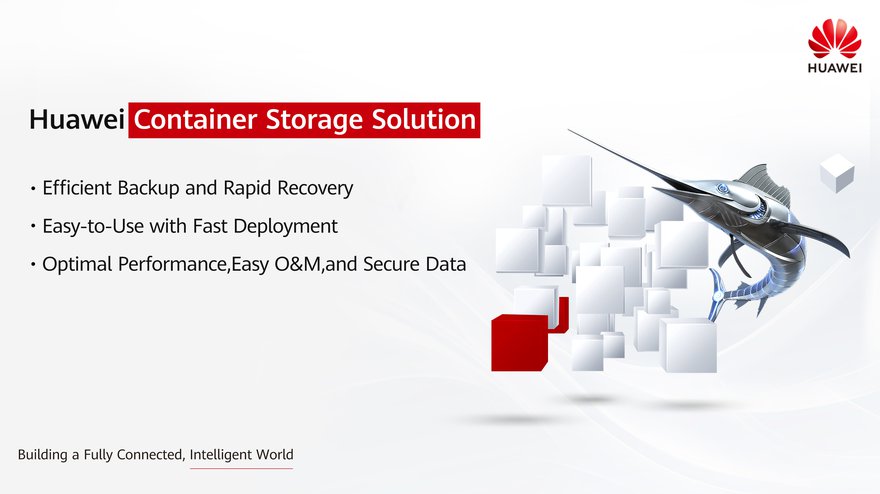Post-pandemic we’d be hard pushed to find an area of our lives that wasn’t impacted by technology. From the advent of e-health services and social media to smart cities and self-driving cars, it’s safe to say the world is a very different place to what it was even five years ago.
But despite digitization having infiltrated our everyday lives both personally and professionally, the speed and convenience it provides has us addicted. And, as we say goodbye to our once analog existence, our insatiable appetite for more data, faster, has not only catalyzed the mainstream use of container storage, but at the same time, posed some major challenges for the data storage infrastructure underpinning it all.
New apps, new data, new resilience
The most obvious challenge this presents the data storage industry is of course the sheer volume and complexity of new applications coming online.
“Today, 56 percent of enterprises are adopting AI in their production and decision-making processes, with 96 percent planning to build more cloud native applications,” affirmed Huawei’s Dr. Peter Zhou in his recent keynote address at the IDI forum 2023 hosted in Munich.
Compounding the issue, 80 percent of the new data generated year on year is unstructured, making it incredibly difficult to store and manage in a mainstream relational database.
New data also means resiliency requirements have become far more urgent across the board, with Dr. Zhou citing a 98 percent year on year growth in ransomware variants, with 14 percent of stored data permanently lost altogether.
These challenges have highlighted the need for a cost-effective solution that will not only facilitate this data, but add value and keep it protected. So, how does one solution meet all these requirements?
With 30 years’ experience in the field, DCD sat down with Cindy Hong, chief architect of Huawei’s container storage solution, to find out more about how Huawei is building the tools we need to both help enable and progress our digital future.
But first, with 95 percent of new applications now developed in containers, why the increased adoption of container storage? Ultimately, it boils down to the maturity of the technology, Kubernetes in particular, as Hong explains.
“The Kubernetes CSI (container storage interface) became generally available in 2018, and by 2019 its most commonly used functions were already available. It’s this maturity that has seen the industry move from the early open-source phase of container storage to the commercial use we’re seeing today,” says Hong.
Although Huawei’s container storage solution interconnects with many mainstream container management platforms, Kubernetes is arguably the most popular today, trumping the likes of VMware and OpenStack thanks to its agility, efficiency, and application-centric architecture. Kubernetes connects both public and private clouds and their associated silos, and is generally considered the de facto cloud operating system.
With the advantage of ‘build once, run anywhere’, Kubernetes is becoming more user friendly too, so much so that over the years users have gained more experience, and therefore more confidence when it comes to moving more applications to the platform. But what sort of applications are we using Kubernetes for?
Different apps, different needs
“For most customers we’ve been investigating, their process of using Kubernetes follows this rhythm: first, they start with DevOps, so apps like Jenkins, then as their confidence grows, they move onto some stateless web apps like WordPress, then onto the stateful apps like Kafka for example,” explains Hong.
Today, the majority of apps we use are stateful – meaning processes can be returned to again and again, and are performed in the context of previous transactions, for example online banking or email. If a stateful transaction is interrupted, the context and history have been stored so users can simply pick up where they left off.
With a stateless process or application on the other hand, there is no stored knowledge or reference to past transactions. An example of this would be performing a Google search. If a transaction is interrupted or closed accidentally, the user would simply start a new one.
Of course, each application has its own individual requirements, but when it comes to more cloud native applications being introduced to on-premise data centers, without the high performance, reliability and availability provided by a container storage solution – not to mention scalability and security credentials – traditional data infrastructure simply wouldn’t be able to accommodate such applications.
So, what can customers expect from Huawei’s solution?
High performance and reliability
“At Huawei these are the words we are known for. We have our own dedicated software, hardware, and chips, which means we have optimized performance and reliability from the inside out; at the SSD level, at the storage OS level, at the chip level and at an architectural level,” says Hong.
Whether it’s DevOps, web apps or critical business, Huawei’s container solution also ensures all three cases benefit from the convenience of improved management and agility. And with 78 percent of enterprises having either deployed or planning to deploy stateful applications in containers – which rely on persistent storage – this is where the need for an agile storage solution really comes into its own.
Scalability
With the sheer number of complex applications coming to the fore, the ability to scale up or down is crucial, particularly when dealing with web applications. This is because their agility and elasticity requires a high level of resiliency, with Kubernetes nodes scaling up or down as the business changes. With Huawei’s storage solution, services and pods can easily and elastically scale-out using high-performance NAS (network-attached storage).
High availability
Container platforms lack the native capabilities to ensure zero interruption, a particularly prevalent issue when deploying databases on Kubernetes. Huawei’s CDR (container disaster recovery) service offers application-level backup, cloning and recovery, so should a Kubernetes cluster or network fail, data can always be restored, resulting in the avoidance of long service interruptions and reduced TCO, without the need for additional backup software.
Security
For those operating in mission critical environments, security will always be top of the agenda. Featuring a multi-tenancy design, Huawei's container storage solution features industry-leading SAN/NAS ransomware protection technology, as well as more traditional security functions such as antivirus and Secure Snapshot.
It is this winning combination of optimal performance, flexibility and reliability that enables Huawei’s customers to deploy and run secure, stable containers quickly and efficiently.
But with digital transformation now moving at breakneck speed, technology must continuously adapt in order to keep pace. Therefore, we wanted to know how Huawei makes certain it continues to deliver a best of breed product to its customers.
“We closely follow the roadmap of the Kubernetes community and any new releases, to ensure the compatibility of our CSI with different Kubernetes platforms,” says Hong. “In addition to that we have also done some dedicated improvements.”
Hong goes on to explain how Huawei has improved the efficiency of its REST API’s (application programming interfaces that enable interaction with RESTful web services, such as Twitter, Google, or Meta.) This means, according to Hong, that when customers need to deploy new nodes with new persistent volumes, the storage should act efficiently.
“Traditionally when deploying virtual machines, they might scale up to 10 or 20. But now with Kubernetes they may create hundreds or even thousands of pods at the same time, so the concurrency and efficiency of our REST APIs is very important."
And despite its credentials, when compared with VMware or OpenStack, Huawei did find a security weakness in Kubernetes, and after a lot of discussion with customers, found that isolation of the storage space was a key factor in keeping data protected.
“When it comes to Kubernetes the biggest thing is knowing how the storage functions can interact with the Kubernetes applications, which is why we have done a lot to combine traditional storage protection functions with Kubernetes.”
Of course, as with any container management platform, there will always be certain conflicts to overcome, for instance cost versus availability or security versus convenience. Thankfully, innovators like Huawei know their platform and their product inside out so they are able to strike that balance, ensuring those operating in mission critical environments are secure in the knowledge their data is safe and the status quo remains uninterrupted.
Shaping the future
Unsurprisingly, it’s not just advancements in technology that will drive our digital future forward, but the relationships formed along the way. Historically, the data center space has been a fiercely competitive one, shrouded in secrecy. But with events such as the IDI Forum bringing the industry together, companies like Huawei are pulling back the curtain, opening the floor to information sharing, new ideas and innovation.
“Being a Chinese company it’s really important for us to host the IDI Forum in Europe and other countries,” says Hong. “We want to efficiently and directly communicate with customers around the globe, what we’re doing, what we’re thinking and what we’ll have in the future.”
It is this collaboration between not only customers, but partners, third parties and the engineers on the ground that we as an industry – both data center and data storage – can grow together to not only embrace, but help progress and shape our digital future.
To find out more about Huawei’s container solution, click here.
More from Huawei
-

Huawei wins huge share of China Mobile's 5G base station contracts
Edges out ZTE and other big vendors to take lion share of contracts
-

Huawei scoops four major accolades at DCS Awards Gala
Huawei wins four major awards for data center facility business
-

Huawei to host Saudi cloud region in Center3 data center
Chinese giant partnering with STC subsidiary

